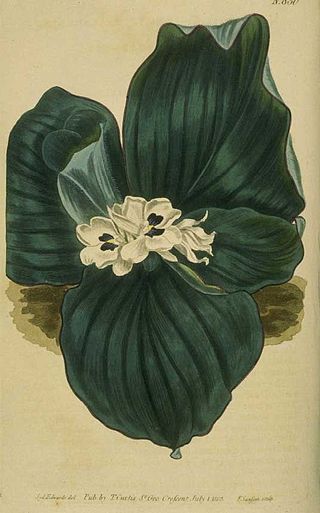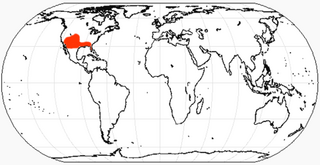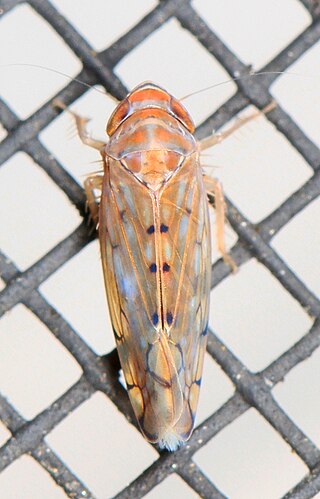
Galangal is a common name for several tropical rhizomatous spices.

Cyperus papyrus, better known by the common names papyrus, papyrus sedge, paper reed, Indian matting plant, or Nile grass, is a species of aquatic flowering plant belonging to the sedge family Cyperaceae. It is a tender herbaceous perennial, native to Africa, and forms tall stands of reed-like swamp vegetation in shallow water.

The Cyperaceae are a family of graminoid (grass-like), monocotyledonous flowering plants known as sedges. The family is large, with some 5,500 known species described in about 90 genera, the largest being the "true sedges" genus Carex with over 2,000 species.

Cyperus is a large genus of about 700 species of sedges, distributed throughout all continents in both tropical and temperate regions.

Cyperus rotundus is a species of sedge (Cyperaceae) native to Africa, southern and central Europe, and southern Asia. The word cyperus derives from the Greek κύπερος, kyperos, and rotundus is from Latin, meaning "round". The earliest attested form of the word cyperus is the Mycenaean Greek 𐀓𐀞𐀫, ku-pa-ro, written in Linear B syllabic script.

Atelopus limosus, the limosa harlequin frog is an endangered species of toad in the family Bufonidae endemic to Panama. Its natural habitats are stream banks in tropical moist lowland forests and rivers of the Chagres watershed in central Panama.

Faxonius limosus, synonym Orconectes limosus, is a species of crayfish in the family Cambaridae. It is native to the east coast of North America, from Quebec to the lower James River, Virginia, but has also been introduced to Europe. It is known commonly as the spinycheek crayfish or Kamberkrebs in German.

Cyperus eragrostis is a species of sedge known by several common names, including tall flatsedge, nutgrass, tall nutgrass, umbrella sedge, chufa, Earth almond, zula nuts, edible galingale and pale galingale.

Cyperus fuscus is a species of sedge known by the common name brown galingale, or brown flatsedge. This plant is native to much of Europe, Asia and North Africa from England, Portugal and Morocco east to China and Thailand. It is an introduced species in North America, where it is naturalized in widely scattered locations in the United States and Canada.

Carpocyon is an extinct genus of the Borophaginae subfamily of canids native to North America. It lived from the Middle to the Late Miocene, 13.6 to 5.3 Ma Mya, existing for approximately 16.5 million years. The four species in the genus varied in size, with the largest being about the size of a wolf; all had relatively small teeth, suggesting a diet that was more omnivorous than that of other contemporary borophagines.

Cyperus scariosus is a perennial herbaceous plant from Australia and New Guinea.

Amnicola limosus, common name the mud amnicola, is a species of very small aquatic snail, an operculate gastropod mollusk in the family Hydrobiidae.

Tongtianlong is a genus of oviraptorid theropod dinosaurs that lived in the late Maastrichtian epoch of the late Cretaceous period. It contains one species, T. limosus.

Osbornellus limosus is a species of leafhopper in the family Cicadellidae.
Janibacter limosus is a species of Gram positive, strictly aerobic, bacterium. The species was initially isolated from sludge from a wastewater treatment plant in Jena, Germany. The species was first described in 1997, and the species name is derived from Latin limosus (muddy). J. limosus was the first species assigned to Janibacter, and is the type species for the genus.

Schoenus limosus is a species of sedge endemic to the KwaZulu-Natal and Eastern Cape provinces of South Africa. It is predominantly a species of wet grasslands, which explains its common name.
Cyperus limosus is a species of sedge that is native to parts of China.














